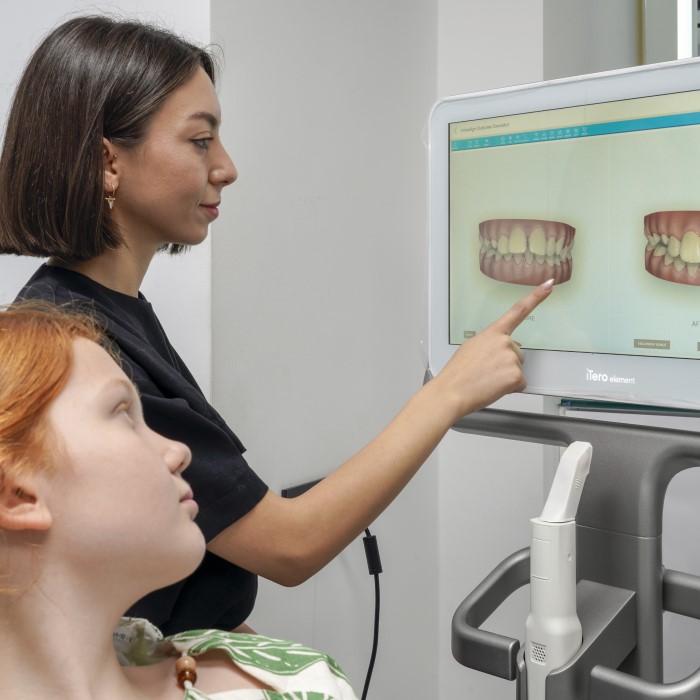Invisalign treatment typically involves several stages:
- Consultation: You start with a consultation with an orthodontist to determine if Invisalign is right for you.
- Custom Treatment Plan: If Invisalign is suitable, a custom treatment plan is created using 3D scans of your teeth.
- Aligner Fabrication: A series of clear aligners are custom-made for your treatment.
- Wearing Aligners: You wear the aligners for 20-22 hours a day, changing them approximately every 1-2 weeks.
- Monitoring Progress: You have regular check-ups with your orthodontist to ensure your teeth are progressing as planned.
- Refinements: In some cases, additional aligners may be needed for further adjustments.
- Completion: Once treatment is complete, you may need a retainer to maintain the results.

INVISALIGN OFFERS SEVERAL ADVANTAGES:
- Aesthetic Appeal: Invisalign aligners are clear and virtually invisible, making them less noticeable than traditional braces, which can be a significant advantage for those concerned about their appearance during orthodontic treatment.
- Removability: Invisalign aligners are removable, allowing you to take them out when eating, brushing, and flossing. This makes it easier to maintain good oral hygiene and enjoy your favorite foods without restrictions.
- Comfort: Invisalign aligners lack metal wires and brackets, reducing the risk of irritation and discomfort often associated with traditional braces.
- Customized Treatment: Invisalign uses advanced 3D technology to create a customized treatment plan tailored to your specific needs, which can lead to more predictable and precise results.
- Convenience: Invisalign typically involves fewer orthodontic appointments compared to braces, as there are no adjustments or wire changes needed.
- Reduced Oral Health Risks: Since you can remove the aligners to clean your teeth thoroughly, there is a lower risk of developing cavities or gum problems during treatment.
- Improved Speech: Some individuals find it easier to speak while wearing Invisalign aligners compared to traditional braces.
Each case is unique, so the duration and number of aligners may vary. It's essential to follow your orthodontist's guidance throughout the process.
The choice between Invisalign and traditional braces should be made in consultation with an orthodontist who can assess your specific needs and goals.
